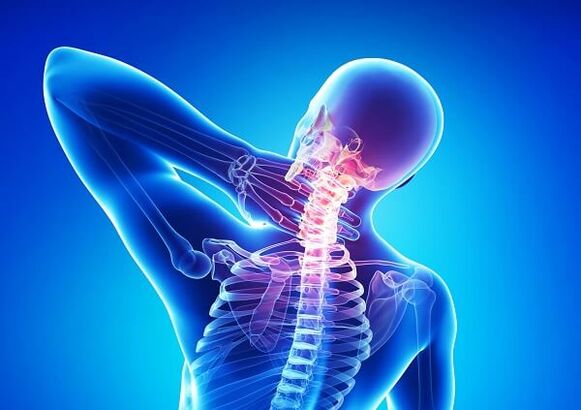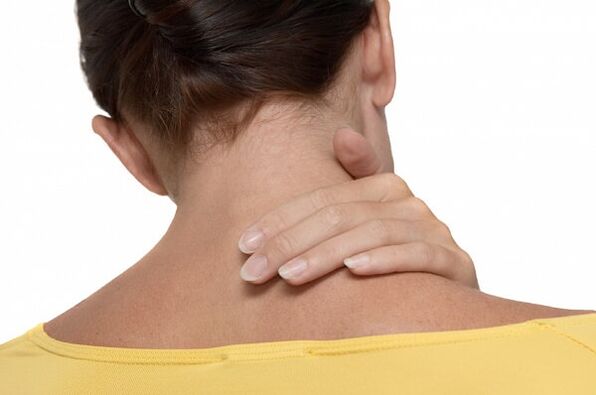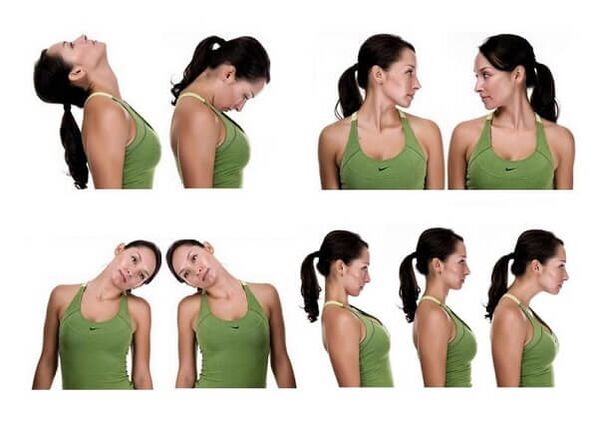
Cervical osteochondrosis can be called one of the most common pathologies of the spine. However, according to statistics, it can be noted that more and more young patients with this degenerative disease, previously thought that osteochondrosis only occurs in older people. It is worth knowing about the symptoms of cervical osteochondrosis and home treatment, because the earlier the pathology is detected and the therapy is started, the less likely it is to develop complications.
Cervical osteochondrosis is a degenerative disease of the cervical spine in which the intervertebral disc is destroyed. The pathology progresses rather slowly, but it should not be forgotten that most degenerative changes are irreversible.
Stages of the disease
The following stages of cervical osteochondrosis are distinguished from initial changes that cause virtually no pain and other symptoms until complete destruction of the intervertebral disc:
- Preclinical phase. At this stage, there are no visible signs of degenerative changes, they take place at the biochemical level. The patient does not experience pain or other changes in his condition.
- The stage in which degenerative changes in the nucleus pulposus increase. Changes in the nucleus pulposus lead to destabilization of the cervical spine, disturbances in the structure of the fibrous plate. The patient begins to experience mild pain and other symptoms.
- The stage of complete destruction of the annulus fibrosus. There is a protrusion of the intervertebral disc - the nucleus pulposus begins to extend beyond the destroyed annulus fibrosus, cervical vertebrae displacements and subluxations occur. Pain syndrome and other symptoms of the disease increase significantly.
- Stage of tissue regeneration of the intervertebral disc. The nucleus pulposus begins to be replaced by fibrous tissue, and the tissues of the scar of the intervertebral disc and the adjacent structures of the spinal column are involved in degenerative processes. With the development of fibrosis of the intervertebral disc, pain and instability disappear, but this condition does not mean healing.
Important!From time to time, the disease may get worse with increased symptoms, usually after increased physical exertion.
The earlier treatment for the disease begins, the easier it is to achieve suspension of degenerative changes. However, the clinical manifestations of cervical osteochondrosis differ in their diversity, it is often impossible to diagnose the disease without a full diagnosis, X-ray, MRI, or CT.
Symptoms
The main difficulty in identifying cervical osteochondrosis is not sufficiently pronounced and not obvious symptoms. In addition to pain syndrome, there can be many vegetative symptoms that can speak of diseases of the nervous system or circulatory system, so they are often identified through misdiagnosis of osteochondrosis.
Men’s autonomic symptoms are often considered less severe than pain. Perhaps this is due to the fact that men are less likely to see a doctor with symptoms of neurological diseases. In women, autonomic symptoms related to the emotional sphere are considered to be more pronounced.
In general, the following symptoms are usually the main symptoms of osteochondrosis of the cervical spine and should all be present at the same time:
- Pain syndrome. The pain occurs in the neck and shoulders, spreading to the shoulder blades. It can also cover the back of the head. In addition, headache and dizziness may occur with osteochondrosis.
- Vegetative symptoms. They are formed in the cervical spine due to nerve endings and pinching of blood vessels in the cervical spine. Headache, dizziness, nausea, palpitations, panic attack-like symptoms occur.
- Feeling numb, restricting mobility in the upper limbs, shoulder blades. This symptom also occurs due to pinched nerve endings in the cervical spine.
These main symptoms that occur in cervical osteochondrosis, often the pain syndrome, are so weak that the cause of the malaise is sought in the field of neurology.

How to cure cervical osteochondrosis at home
Home treatment of cervical osteochondrosis is possible in the early stages of the disease. Therapy should be comprehensive, including the use of painkillers, therapeutic practices, massage, and a number of other procedures. Every element of therapy is essential for complete healing.
Medicine
Generally, painkillers are needed, starting with over-the-counter medications. If such drugs do not help, blockades - injections with anesthetics are used at the site of the lesion.
Topical corticosteroid ointments may also be used. Care must be taken with their use, as they can be harmful if used irrationally. Such funds are strictly subject to prescription and their own use is prohibited.
In the case of severe vegetative symptoms, devices can also be used to improve the blood supply to the brain. In rare cases, they are prescribed. Sometimes, in addition to them, day sedatives are used to help suppress the depressive symptoms that result from tightening nerve endings.
Massage
In case of osteochondrosis, cervical spine massage is important, which helps to restore blood circulation, relieves tension in tense muscles. Many different massage techniques are used, self-massage is allowed at home, to do this you have to tilt your head forward in a sitting position, put your hands on both sides of your neck.
Important!Under no circumstances should pressure be applied to the spine, otherwise the pain syndrome may worsen.
With stroking movements, you should move from the base of the head to the shoulder, trying to press but not causing pain. The procedure should be continued for 10-15 minutes.
Gymnastics
Exercising osteochondrosis of the cervical spine is extremely important for maintaining muscle tone and cervical spine mobility. With this disease, the muscles of the neck need to be trained.
The simplest exercise - in a sitting position, you should put your hand under your chin, press up lightly. At the same time, it must withstand the pressure of the head. The exercise should be performed for fifteen seconds, increasing in duration over time.

Diet
In case of osteochondrosis, it is advisable to start with a better diet, more fresh vegetables and fruits should be included in the diet. We also recommend that you consume more seafood and fermented dairy products to replenish the amount of substances needed for the normal functioning of the musculoskeletal system.
Treatment with folk remedies
Folk remedies are not as effective in treating cervical osteochondrosis, but there are some recipes that can help with this disease. First, various compresses are offered, one of the most effective being potato-based. Grate the raw potatoes, add a spoonful of honey, place in a sore spot, cover with foil.
Potatoes can be replaced with unleavened sourdough. In the absence of inflammation, you can cover the compress with a warm cloth for greater effect. You can also lubricate the cervical region with honey during the massage and arrange the rubbing with it, honey provides the best effect.
You can get the best results by combining folk remedies and other treatments.

















































